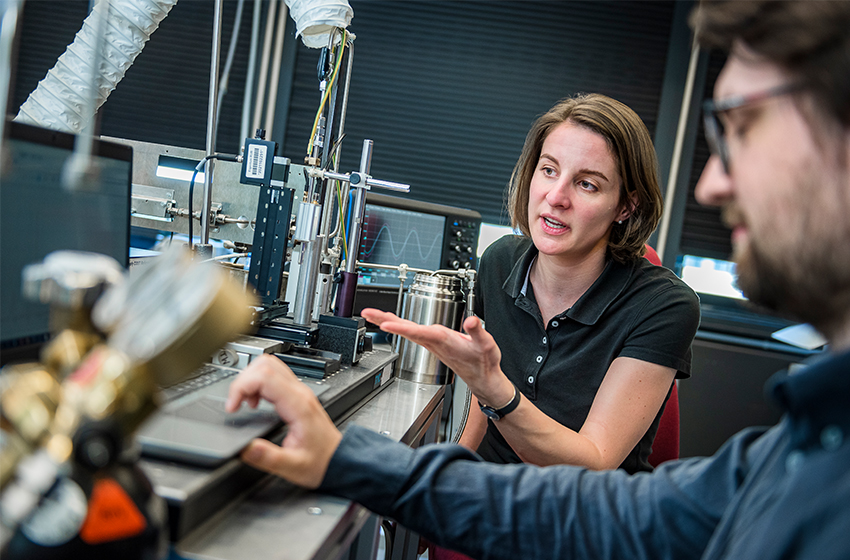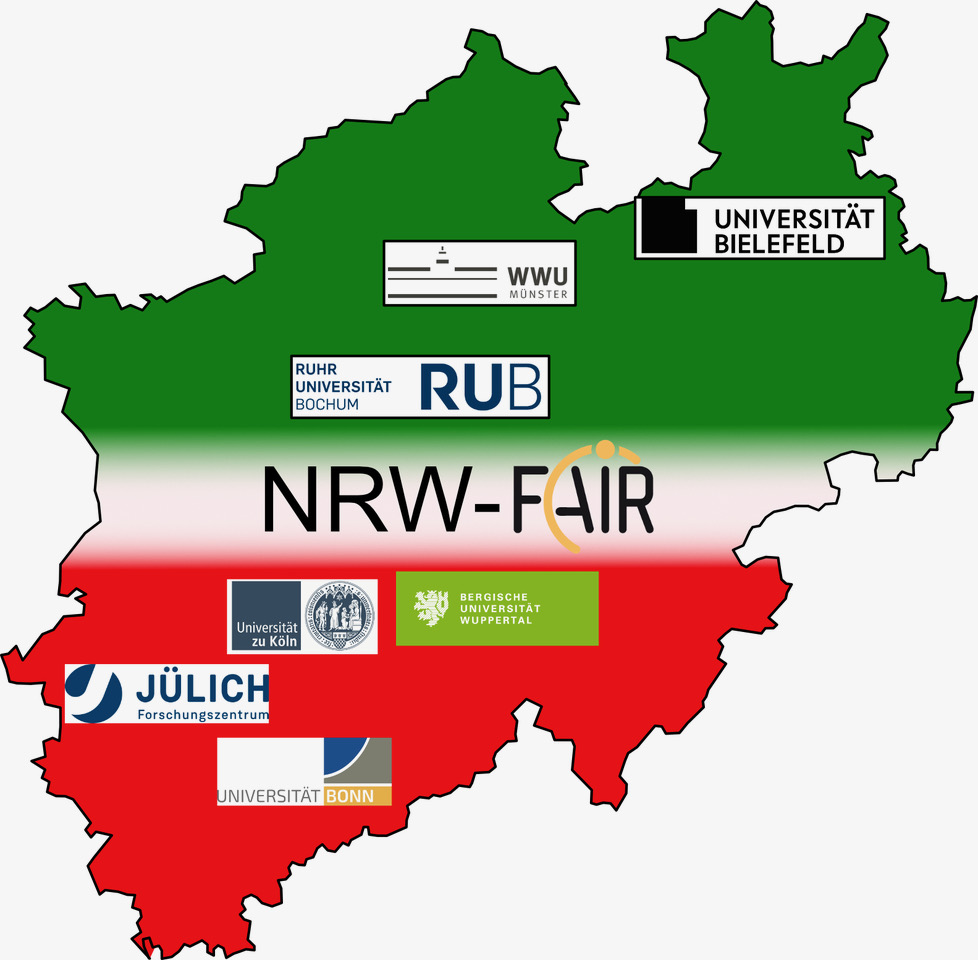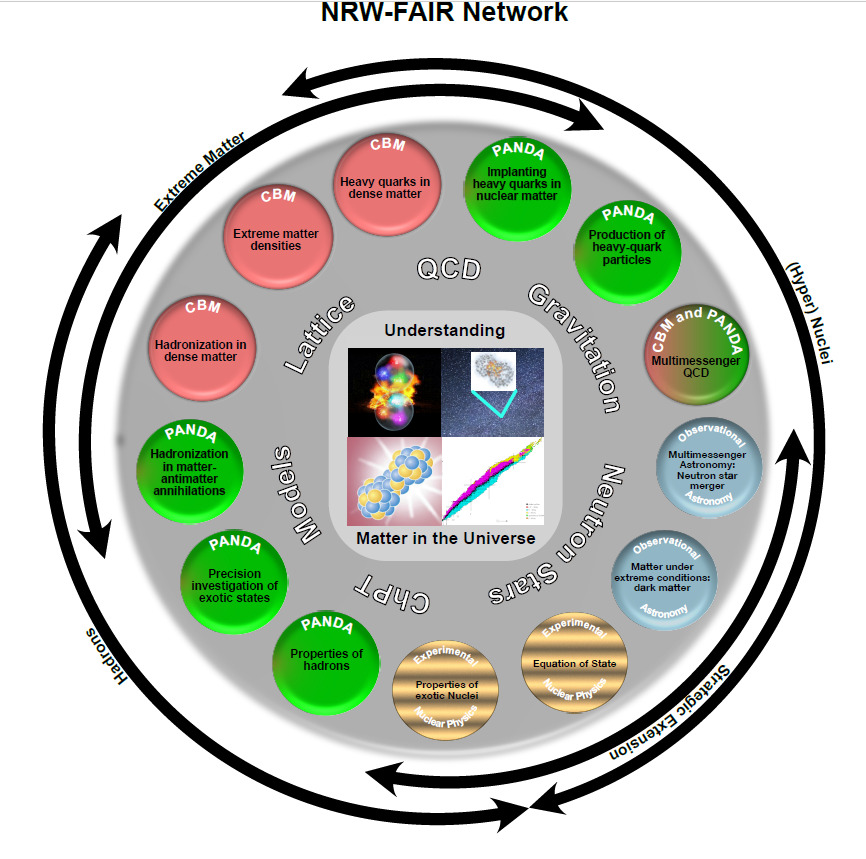Collaborative projects at the Faculty of Physics and Astronomy
In collaborative projects, at least two collaborative partners work together on a project-related basis, for example companies in the commercial sector and scientific institutions. At our faculty, collaborative projects are funded at the state and federal level.

Image: Damian Gorczany
Joint projects BMBF
Astroparticle Physics - IceCube: Astroparticle Physics with the IceCube Neutrino Telescope - Subproject 9
Prof. Dr Julia Tjus and Prof. Dr Anna Franckowiak
Since the IceCube neutrino telescope at the geographic South Pole was completed at the end of 2010, several groundbreaking discoveries have been made. The most important finding is the first evidence of the existence of high-energy, extragalactic neutrinos. In the search for sources, the standard model for neutrino production in gamma-ray bursts could be ruled out, and the first indications that active galaxies produce high-energy neutrinos are becoming stronger. However, in order to be able to resolve individual sources, IceCube must be expanded with the final goal of installing IceCube-Gen2 - a detector that is a factor of 10 larger than IceCube. A first step in this direction is the IceCube Upgrade. The Ruhr-Universität Bochum is specifically involved in the expansion of IceCube with the surface array IceAct and is working on the calibration of the detector via the well-defined measurement of the moon's shadow at different energies.
Astronomy / Astrophysics - LOFAR: D-LOFAR IV - A German Participation in the International LOFAR Telescope - Subproject 3
Prof. Dr Ralf-Jürgen Dettmar
LOFAR (Low Frequency Array) is the world's largest operating distributed radio telescope. Several German institutes of the German Long Wavelenght (GLOW) consortium operate six LOFAR stations in Germany. These complement the Dutch stations and the central processing facilities there, as well as other international stations throughout Europe.
Astronomy / Astrophysics - D-MeerKAT: A German contribution to the further development of radio astronomy in the centimetre wavelength range - Subproject 3
Prof. Dr Ralf-Jürgen Dettmar
The SKA (Square Kilometre Array) is the upcoming world project in radio astronomy. It will be the largest astronomical facility ever built, with three different instruments in Australia and South Africa. The MeerKAT project, which currently has 64 antennas, will be expanded into the SKA over the next few years.
Hadron Physics - Ultra-Fast Calorimeter (UFaCal)
Prof. Dr Ulrich Wiedner
In the newly established project "Ultra-Fast Calorimeter" ("UFaCal"), funded by the BMBF in collaborative research, the Wiedner Chair is developing an extremely fast detector for γ-rays together with colleagues from the University of Gießen and the University of the Federal Armed Forces in Munich. For this purpose, they are trying to combine super-fast scintillators with newly developed silicon photomultipliers in order to reach the ps-time resolution range.
High Energy and Hadron Physics - The PANDA Experiment at FAIR
Prof. Dr Ulrich Wiedner
The PANDA experiment is to become one of the most important experiments of the large-scale project Facility for Antiproton and Ion Research (FAIR). FAIR focuses on a synchrotron complex that delivers intense pulsed ion beams. Antiprotons produced by the primary proton beam are then filled into the High Energy Storage Ring (HESR) and collide within the PANDA detector. The PANDA collaboration, with more than 500 scientists from 20 countries, aims to conduct fundamental physics research on various topics related to strong forces, exotic states of matter and the structure of hadrons. To gather all the necessary information from antiproton-proton collisions, a universal detector is being built that is capable of precise trajectory reconstruction, energy and momentum measurements and very efficient identification of charged and neutral particles.
Plasma Astroparticle Physics - CTA: the Cherenkov Telescope Array - Subproject 8
Prof. Dr Julia Tjus and Prof. Dr Anna Franckowiak
The Cherenkov Telescope Array (CTA) is the next generation of gamma-ray telescopes with two arrays planned - one in the northern hemisphere on La Palma, one in the Atacama Desert in Chile. Worldwide activities are bundled in this project to increase the current sensitivities of GAmma telescopes by a factor of more than 10 again and thus increase the number of detected sources from more than 100 to more than 1000 and at the same time improve the resolving power to resolve these sources to a level that allows, among other things, to identify the accelerators of cosmic rays and to search for dark matter. The Chair of Theoretical Physics is specifically involved in the development and expansion of CTA's onsite analysis software through collaborative research.
Plasma Physics - Carbon2Chem
Prof. Dr Achim von Keudell
The aim of the initiative Carbon2Chem® is to use metallurgical gases from steel production as a feedstock for chemical products - including the CO2 they contain. Excess electricity from renewable energies is to be used as an energy source. Physics is involved in this with a project on plasma catalysis.
NRW MKW funding programme
Astronomy / Astrophysics - BIG BANG TO BIG DATA (B3D): NRW cluster for data-intensive radio astronomy
Prof. Dr Ralf-Jürgen Dettmar
Participants:
- Max Planck Institute for Radio Astronomy, Bonn
Prof. Dr Michael Kramer, with Prof. Dr Karl Menten & Prof. Dr Anton Zensus - University of Bonn, Argelander Institute for Astronomy
Prof. Dr. Frank Bertoldi, with Prof. Dr. Frank Bigiel & Prof. Dr. Cristiano Porciani - Bonn-Rhine-Sieg University of Applied Sciences
Prof. Dr André Hinkenjann, with Prof. Dr Ernst Kruijff - Ruhr-Universität Bochum
Prof. Dr. Ralf-Jürgen Dettmar, with PD Dr. Dominik Bomans & Prof. Dr. Hendrik Hildebrandt - Dortmund University of Technology
Prof. Dr. Dr. Wolfgang Rhode, with Dr. Dominik Elsässer - Bielefeld University
Prof. Dr. Dominik Schwarz, with Prof. Dr. Joris Verbiest - University of Cologne: 1st Institute of Physics and Regional Computing Centre
Prof. Dr Stefanie Walch-Gassner, with Prof. Dr Peter Schilke, Prof. Dr Stephan Schlemmer, Prof. Dr Jürgen Stutzki, Prof. Dr Ulrich Lang, Dr Monica Valencia-Schneider - Research Centre Jülich
Prof. Dr Susanne Pfalzner, with Prof. Dr Thomas Lippert & Dr Thomas Fieseler
Hadron Physics - FAIR: Facility for Antiproton and Ion Research
The NRW-FAIR network brings together physicists who conduct research in hadron and particle physics. As a NRW-based network, the researchers want to play a significant role in shaping the work at the Facility for Antiproton and Ion Research in Darmstadt (FAIR). FAIR is a particle accelerator for basic physics research that is expected to start in 2026; one of the largest research facilities ever built in Europe.
Prof. Dr Ulrich Wiedner (RUB, spokesperson)
Participants:
University of Bonn
Research Centre Jülich GmbH
University of Münster
University of Wuppertal
Bielefeld University (in years 3 and 4, if applicable)
University of Cologne (in years 3 and 4, if applicable)
GSI Helmholtz Centre for Heavy Ion Research in Darmstadt (partner without funding)
More information:
Weiler, J. (2018). Exotic addition to the particle zoo. From RUBIN, 1/2018, 46-50. retrieved rub.de [05.07.2022].
Wiedner, U. (2018). Quarks in a tetrapack. From Physics in Our Time, 4/2018 (49), 183-189. Retrieved onlinelibrary.wiley.com [05.07.2022]



